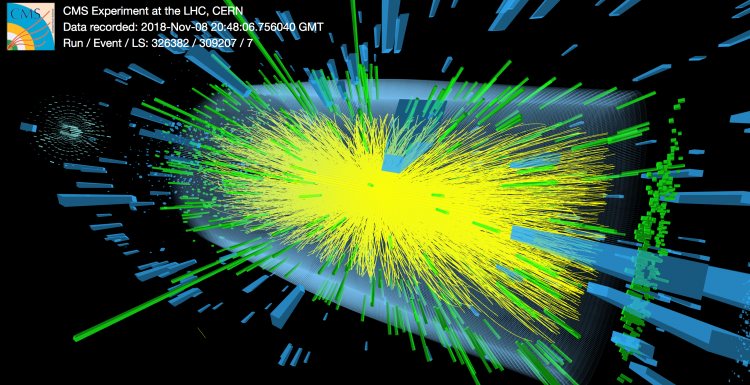
We are nearing the end of the year and LHC started colliding another species of particles than protons: the nuclei of heavy atoms. These so-called “heavy-ion” collisions are used to study the properties of a particle soup known as the “quark-gluon plasma” (QGP) that existed about a microsecond after the big bang. The collisions of these heavy nuclei produce the hottest form of matter ever observed in a controlled environment, allowing us to travel back in time nearly 14 billion years and observe conditions similar to the early Universe. Of particular interest is to understand how ordinary matter, as we know it today, was formed.
CMS is prepared to record billions of collision events, the largest sample of heavy ion collisions recorded up to now. Several measurements are planned with this large data sample: we hope to see the heaviest quark in nature, the top quark, for the first time produced in the quark and gluon soup, and to measure a large number of beauty quarks drifting in the soup. In addition, we will search for excitation similar to sound waves produced when the highest energetic particles travel through the QGP.
- Log in to post comments

